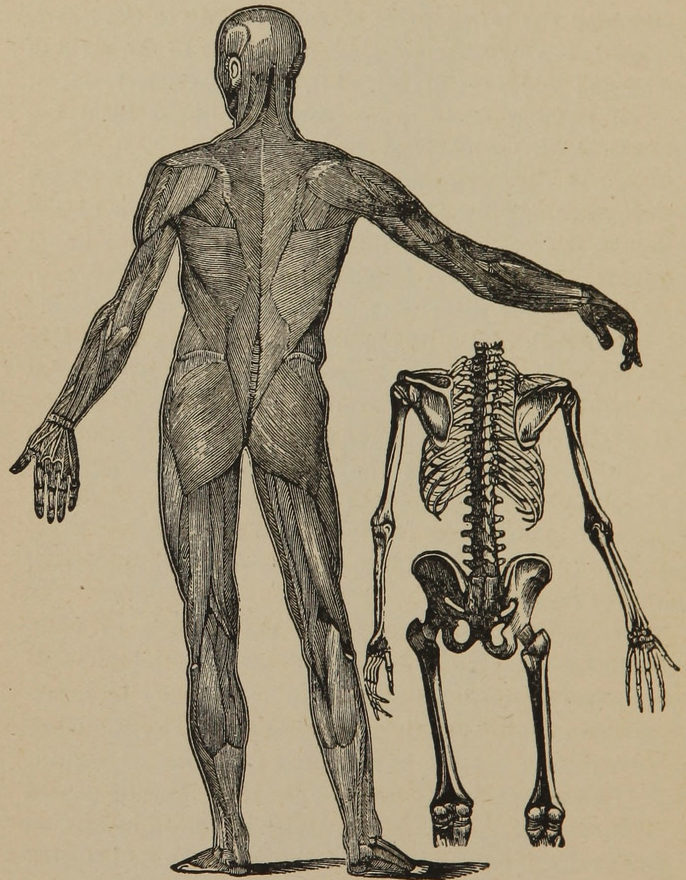The human body functions as a system, in which parts do things for other parts and for the organism as a whole. Each organ affects and is affected by others. The brain gets signals from all parts of the body telling what is going on there. The brain also sends signals to parts of the body to influence what they do. Human beings have body systems for providing coordination of body systems. Organs and organ systems work together. This includes circulation of and transportation by blood, and the carrying of messages by nerves to help the organism respond to its environment. Asking “What if?” questions such as “What might happen if some other parts were not there or were not working?” can stimulate the thought process about how everything works together as a whole. Interactions among the senses, nerves, and brain make possible the learning that enables human beings to cope with changes in their environment.
We model the body as a system of linked segments, where each segment is a mass. We don’t generally attempt to define mass, and instead appreciate it intuitively as one of the fundamental properties (along with time, length, and electric charge) of our physical world.
Our mind is not independent of our body and our bodies are an integral part of our minds. The influence our bodies have over our minds is considerable. Logical thought processes although at the highest tier of a decision-making hierarchy, are still only a small percentage of our overall daily decisions. Many of our decision-making processes and most robust skills happen below our cognitive thought level. When making breakfast, walking, operating a vehicle; bicycle/car, there are hundreds of smaller decisions that we make from reflex action with astonishing precision and accuracy. I postulate that there is much hidden potential to considering the entire body when designing an interface.
“The anatomy of the human body includes a skeletal system, a muscular system, and a central nervous system. Since all of the systems are critical and interdependent, a failure in one subsystem affects the ability of the body to perform effectively. Just as an understanding of human anatomy is fundamental to a doctor’s diagnosis and treatment of ailments in a body.” (2002. John Wiley & Sons, Inc.).
Conclusion
The body as a system, simply put, is an interconnected working of smaller systems all working together to achieve a common goal. And even though that common goal may change from time to time, there will always be that team of systems all working together as a whole in order to accomplish or overcome all situations.
References
John Wiley & Sons, Inc., (ed.) (2002) Systems Thinking & Performance Measurement. University of Phoenix.
